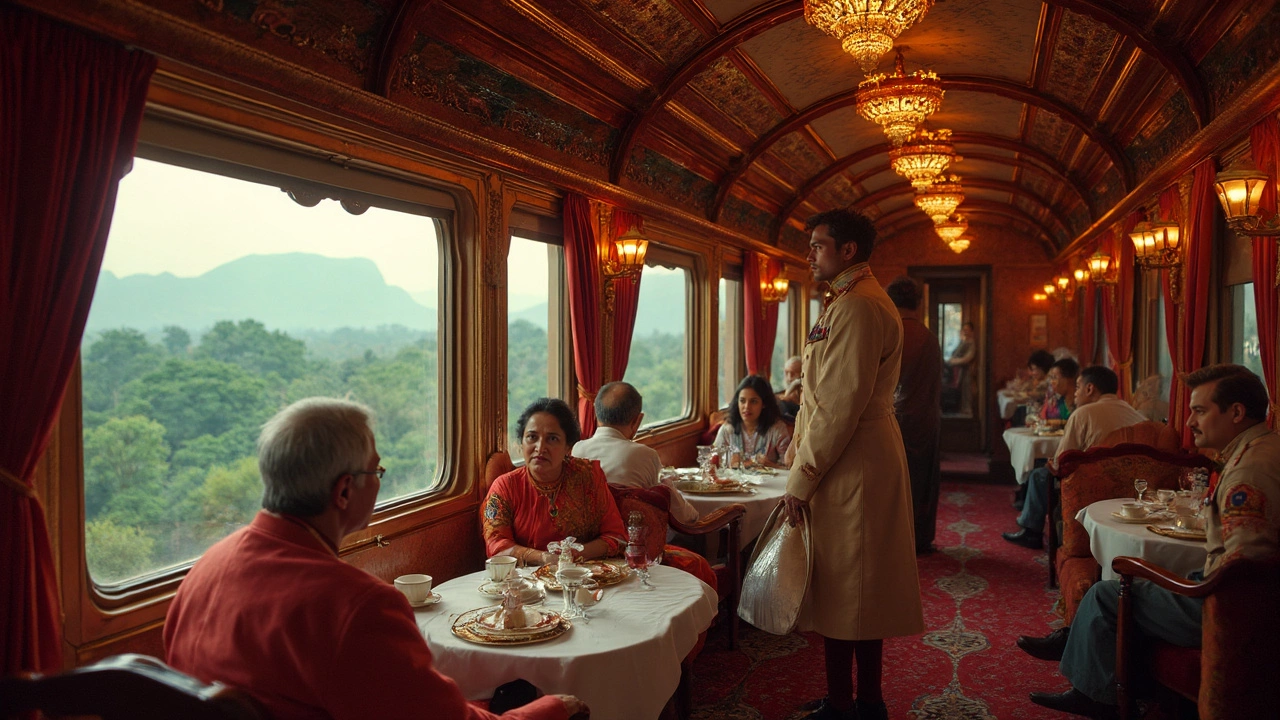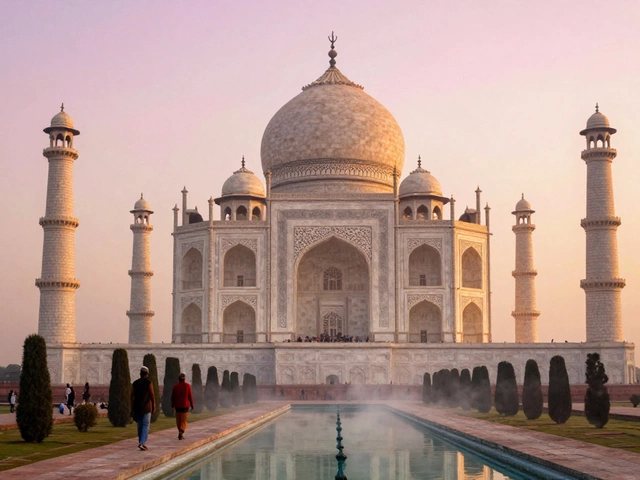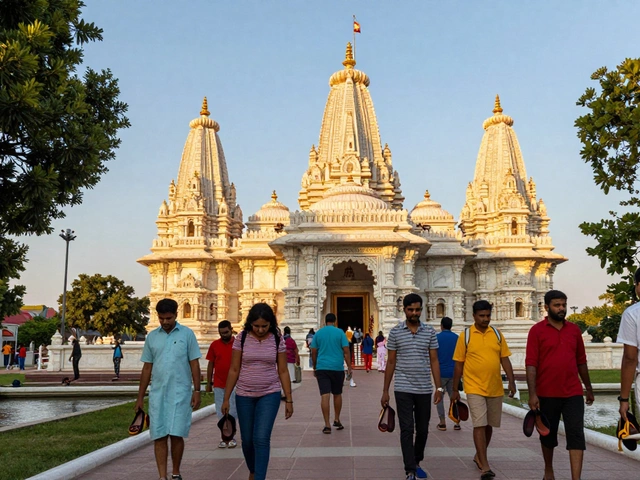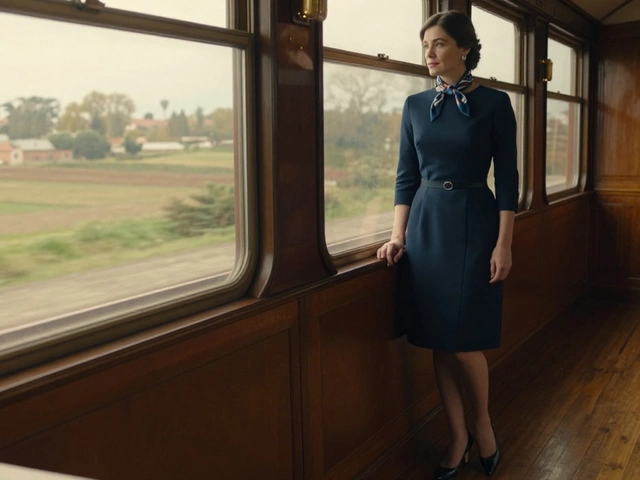Ever wondered why those cozy beds on wheels cost so much? Sleeper trains are a whole different animal compared to your usual seat on a day train. You’re not just paying to get from Point A to Point B; you’re signing up for something closer to a boutique hotel experience that just happens to be zipping through the countryside.
Most sleeper trains—even the basic ones—have way more overhead than regular passenger trains. There’s all that extra space for beds instead of seats, the staff to look after you all night, and a kitchen serving up hot meals as you watch cities blur past. And that’s before you even get into the crazy stuff like en-suite bathrooms, live entertainment, or private butlers on the top-tier luxury routes. If you’ve ever wondered why your favorite budget airline can fly you further for less, the answer’s here: running an actual bed (plus sheets and breakfast) down hundreds of miles of track is always going to be pricier.
- Beneath the Ticket Price: What Goes Into the Cost
- Space, Comfort, and Privacy on the Rails
- All the Extras: Perks, Meals, and Staff
- Hidden Money Drains: Regulations and Upkeep
- Is It Worth It? Tips Before You Book
Beneath the Ticket Price: What Goes Into the Cost
At first glance, sleeper train prices can feel like daylight robbery. But look closer, and you’ll spot a bunch of reasons the cost stacks up. Unlike basic train coaches that squeeze in as many seats as possible, sleeper trains limit the number of passengers per carriage—think maybe 20 to 40, compared to 80+ in a seated car. That means way fewer tickets sold to cover the same big-ticket expenses, from staff salaries to rolling stock upgrades.
The amount of money poured into running a sleeper train is wild compared to regular trains. Here’s where it bites:
- Sleeper trains need dedicated crews, including night attendants, chefs, and cleaning staff. It’s a 24-hour operation; the staff don’t clock off when you tuck in.
- Beds take up way more space than seats, so fewer paying passengers per trip.
- The bedding, private bathrooms, and showers need constant cleaning and replacing—think hotel-level comfort, but where the hotel moves 70 mph.
- Full kitchens onboard drive up kitchen equipment, food supply, and staffing costs. Fresh meals aren’t cheap on the rails.
Maintenance for sleeper trains is no joke. These trains often use older, custom-built cars that are trickier (and pricier) to maintain or upgrade. Plus, safety checks and inspections for overnight trains are strict, thanks to overnight journeys across borders and through remote regions.
| Factor | Standard Train | Sleeper Train |
|---|---|---|
| Passengers per Carriage | 80+ | 20-40 |
| Staff-to-Passenger Ratio | 1:40 | 1:10 |
| Bedding & Linen Service | No | Yes |
| Onboard Meal Service | Snacks/minimal | Full kitchen, fresh meals |
| Cleaning Frequency | Once daily | Multiple times per trip |
Another big one: insurance and regulations. Most overnight services need higher liability coverage and more checks, all pushed by local laws. Some countries, for example, require certain staff rest periods and safety gear onboard, even if just a handful of people are traveling. The bottom line? With all of these layers, sleeper trains end up being expensive to run, and that sticker shock gets passed on to you, the traveler.
Space, Comfort, and Privacy on the Rails
One big reason sleeper trains cost so much is the way they give you more personal space than any regular train could. Instead of cramming in as many seats as possible, these trains use up whole cars for just a handful of private cabins. That’s a lot of real estate for not many people, especially compared to those open carriages where you’re elbow-to-elbow with strangers.
Even the most basic sleeper cabins usually come with their own beds, clean sheets, and a door you can actually lock. Go up a class and you’ll find extras like en-suite toilets, showers, or even your own sitting area. On some famous luxury routes—think the Venice Simplon-Orient-Express in Europe or the Maharajas’ Express in India—cabins are downright plush, sometimes with double beds, mosaic-tiled bathrooms, and vintage touches everywhere. Those amenities take up space, and every square foot you get means fewer tickets sold per journey, which drives up the price for everyone on board.
There’s also the privacy factor. Want to snooze, read, or just lounge in pajamas while the world whizzes by? You’re paying for the option to shut out the crowd and carve out your own quiet nook. And you know what else takes up space? Sound-proofing, thicker walls, and fancy cabin doors—nobody wants to hear their neighbor snoring or the train clanking all night.
All these touches aren’t just about luxury—they also cost money before the train ever leaves the station. Rail companies need to buy, customize, and keep up these specialty cars, which are nothing like the cheap, mass-produced ones used on commuter lines. That all stacks up to create a much more expensive ride when you want privacy and real comfort instead of just a seat and a view.
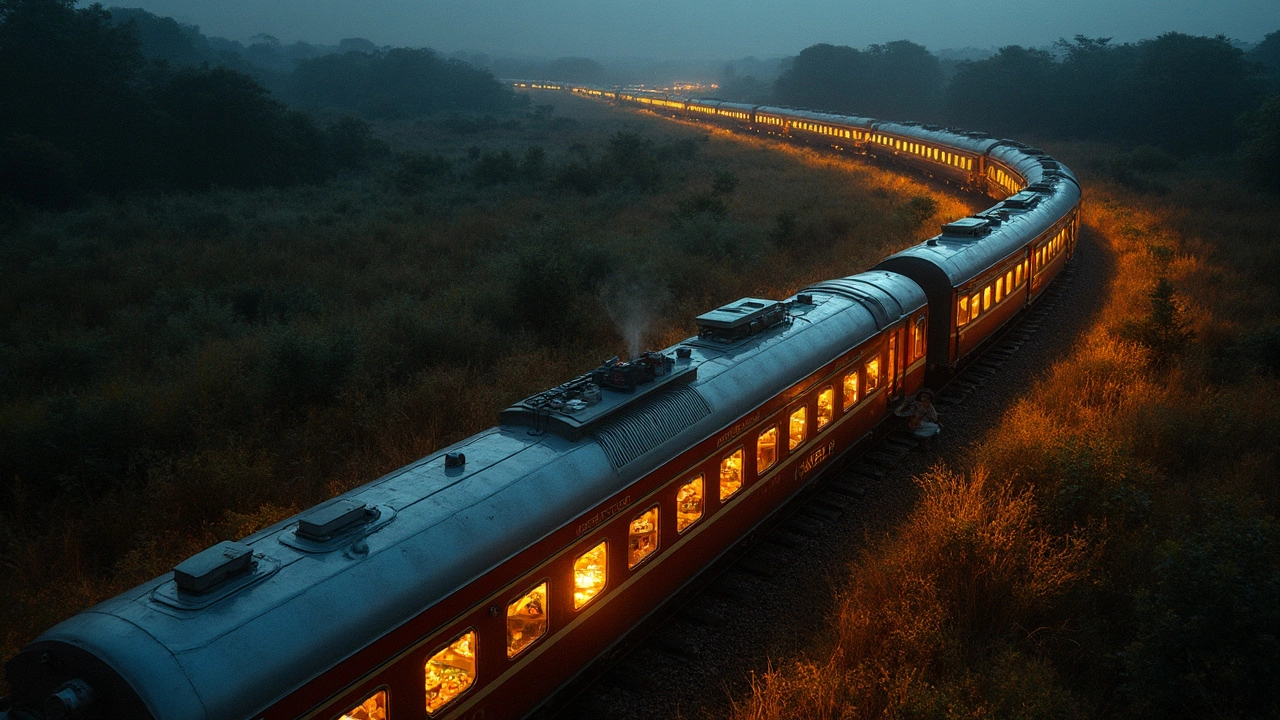
All the Extras: Perks, Meals, and Staff
This is where sleeper trains really rack up the costs—and where a lot of the magic happens. When you buy a ticket for one of these overnight rides, it's not just transportation. You're paying for a bundle of perks you won't find on regular trains or budget airlines.
Meals are a huge part of the sleeper train experience. On high-end rail journeys like the Venice Simplon-Orient-Express, you'd have your dinner served on white tablecloths, with menus crafted by top chefs. Even on less fancy routes, your fare typically includes a hot breakfast and, in many cases, a three-course dinner. On Amtrak’s sleeper lines, for example, the ticket price covers full meals and unlimited coffee, all brought right to your cabin.
Then there’s the staff. Sleeper trains run almost like moving hotels, with stewards making beds, delivering snacks, and solving problems around the clock. For instance, the legendary Blue Train in South Africa boasts a nearly one-to-one ratio of staff to guests for their luxury cabins. It takes a small army to keep everything running smoothly—cleaners, cooks, waiters, conductors, even musicians or tour guides on some routes.
- Fresh linens and room cleaning several times a day
- Private or semi-private bathrooms and showers
- Waiter service for meals and snacks
- Lounge cars with bars and live music on select trains
- Concierge service, including help with luggage and special requests
On the sleeper trains that specialize in high-end travel, the extras can get pretty wild. We’re talking personalized wake-up calls with fresh coffee, bathrobes and slippers, and even afternoon tea with cakes. These touches are built into the price, so the fare covers a lot more than just your bunk for the night.
Check out the numbers below for a quick look at what's included on some popular sleeper trains:
| Train | Meals Included | Staff Ratio | Special Extras |
|---|---|---|---|
| Venice Simplon-Orient-Express | All meals, afternoon tea | 1 staff: 2 guests | In-cabin breakfast, personal steward, live music |
| Amtrak (USA) | All meals | 1 staff: 6 guests | Private restroom in some rooms, coffee service |
| Blue Train (South Africa) | All meals, drinks | 1 staff: 1.5 guests | Butler service, cigar lounge, sightseeing stops |
If you’re wondering why train fares feel sky high, all these extras—from gourmet food to around-the-clock staff—have a lot to do with it.
Hidden Money Drains: Regulations and Upkeep
Here’s where a lot of the price tag on sleeper trains gets quietly cranked way up: government rules and nonstop maintenance. EU rules, for example, require nighttime trains to meet stricter safety codes, like automatic fire-suppression systems and specialized emergency exits. That means every train car has to get upgraded or replaced way more often than regular commuter trains. In the U.S., Amtrak has to stick to strict federal regulations on everything from track noise to accessibility—it’s not just a matter of picking out fresh sheets.
And then there’s the upkeep. Luxury sleeper trains don’t just need basic cleaning like your local subway—they need full-on deep cleans and linen service after every trip. Cabins have to get checked and fixed constantly: beds, private bathrooms, air conditioning, and all the little extras need to be in working order for every guest. One broken light or jammed door and you’re getting complaints or refunds, so the maintenance train never stops rolling.
Let’s not forget track access fees. Night trains have to pay these to roll on tracks owned by national rail, freight companies, or other third parties. These charges can be higher at night, and operators pass the cost right onto your ticket. Plus, there’s insurance—yep, luxury trains carry higher premiums thanks to all that fancy equipment and the tiny risk of overnight incidents.
If you’re ever shocked at how much it costs to ride in a real bed on rails, just remember: it’s not just better pillows and fancier pajamas driving the price—it’s a mountain of hidden costs that regular trains just don’t have to deal with.
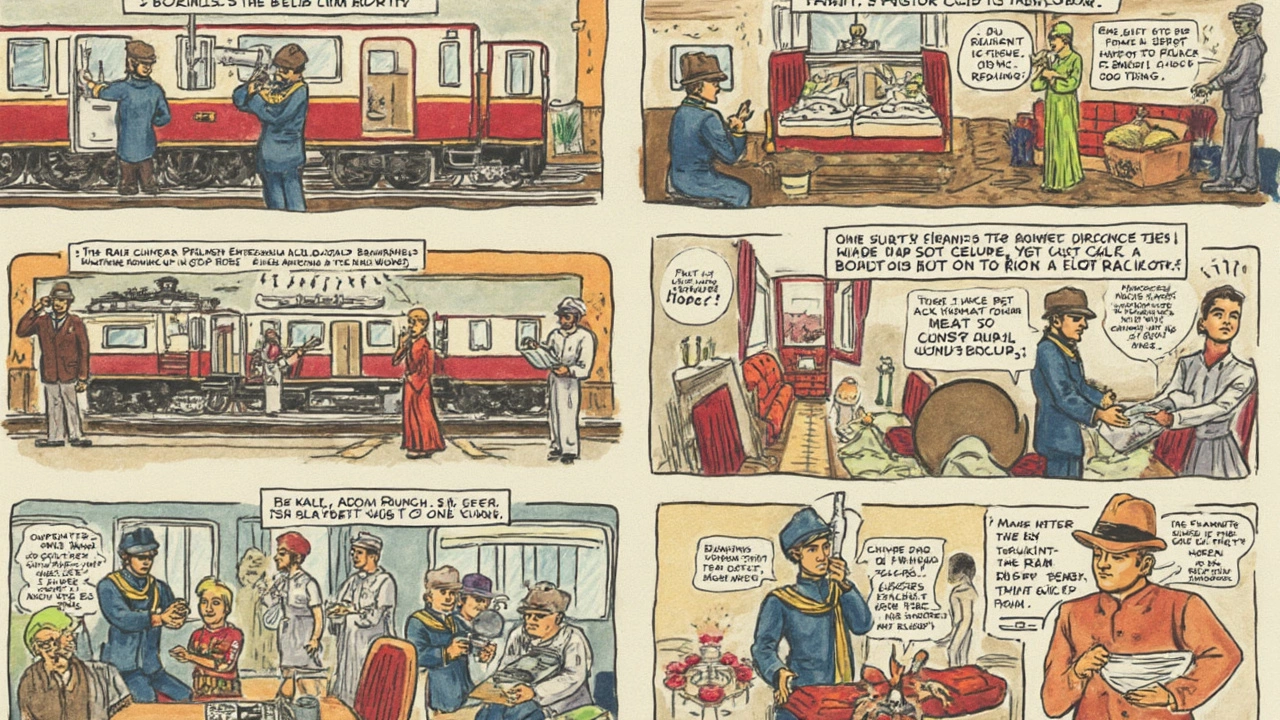
Is It Worth It? Tips Before You Book
Shelling out for a sleeper train trip sounds dreamy, but is it really the best move for your money? Let’s look at what you actually get for that high price tag, plus some must-know tips before you hit “book.”
First, these trains don’t just charge for the ride—they’re selling an all-in-one deal. Think hotel room, meals, snacks, views, and often, activities or guided stops. On the most famous routes, like the Orient Express, 24-hour staff, multi-course dinners, and plush cabins are standard. But these extras can mean prices that run from $300 per night for budget options to over $6,000 per cabin for the swankiest journeys.
| Train | Route | Average Cost (USD, per person) | Includes |
|---|---|---|---|
| The Caledonian Sleeper | London-Scotland | $350–$850 | Private room, breakfast, lounge access |
| Venice Simplon-Orient-Express | London-Venice | $3,500–$6,000 | Luxury cabin, all meals, staff, extras |
| Amtrak Roomette | Chicago-New York | $350–$700 | Roomette, meals, access to shower |
Here’s the real kicker: if you just need sleep and travel, a budget airline and a cheap hotel will almost always be cheaper. But if you value slow travel—the kind where the journey is half the reason you’re going—then the price starts to make sense. You’re not crammed into cattle class or dealing with airport chaos. You get your own space, food cooked for you, and a genuinely different experience.
If you’re considering a sleeper train, keep these tips in mind:
- Weigh the extras: Check if meals, drinks, or tours are included. Add up what you’d spend on flights, hotels, food, and transfers to do a fair comparison.
- Book early: Cabins (especially affordable ones) can sell out months ahead. Last-minute prices usually spike.
- Go off-peak: Travel during shoulder seasons or weekdays for lower fares and smaller crowds.
- Compare routes: Some less-famous sleeper trains offer the same comforts at a fraction of the price. European night trains, for instance, have fewer bells and whistles than luxury lines, but a similar vibe for much less.
- Bring essentials: Not all sleeper trains hand out toiletries or bottled water. Pack your own small comforts to avoid onboard gouging or surprises.
Sleepers are not just about getting a bed—they’re about the whole experience. If that’s what you’re craving, and the price matches your travel priorities, then it’s totally worth the splurge. If you’re just after the cheapest way from one city to the next, save your cash for another adventure.
